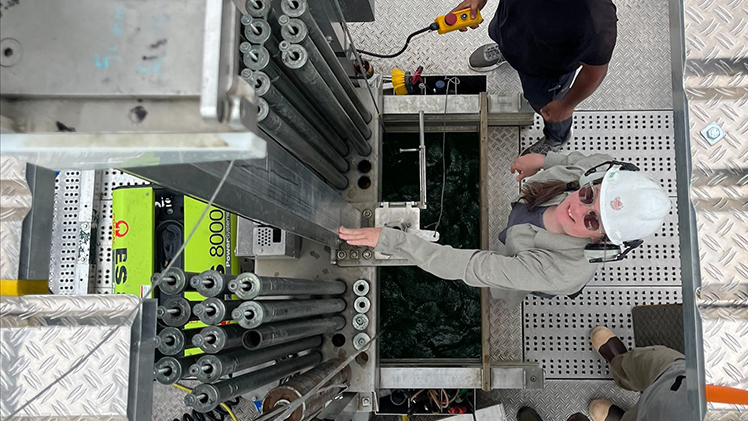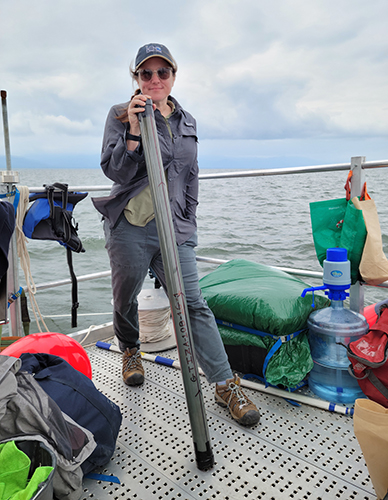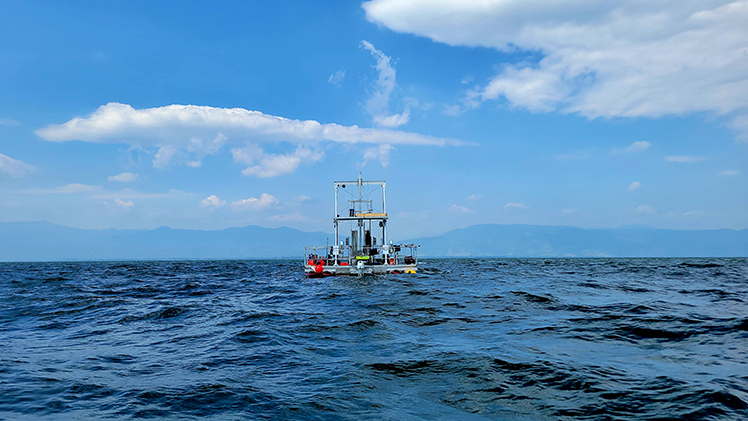As ice sheets and glaciers melt and sea levels rise, coastal freshwater systems are likely to see more salt.
What will that mean for these biologically diverse ecosystems?

Dr. Trisha Spanbauer, an assistant professor in the Department of Environmental Sciences, is participating in a collaborative research project in Guatemala under the National Science Foundation.
The University of Toledo’s Dr. Trisha Spanbauer is one of the researchers currently searching for answers to this question in eastern Guatemala. The team of scientists is gathering samples at a case study site in Lake Izabal and El Golfete, where they’re counting on marine incursions in the recent past to offer clues as to what to expect in the not-so-distant future.
“Models of sea-level rise tell us that we’re going to see more marine waters pushing inland, which is significant because it introduces saline waters into freshwater lakes, rivers and wetlands along coasts. What we are investigating here is how the plants and aquatic organisms that live in these freshwater ecosystems will respond to this environmental stress,” said Spanbauer, an assistant professor in the Department of Environmental Sciences. “These ecosystems in Guatemala are valuable opportunities to see how these systems responded to both gradual and rapid inundations, and we can use what we learn here to assess how at-risk systems here and around the world will respond to future sea-level rise.”
The research is a collaborative effort under the National Science Foundation, which is funding it through its cross-directorate program Biodiversity on a Changing Planet. The program facilitates interdisciplinary research into functional biodiversity — referring to all the elements of biodiversity that influence how an ecosystem operates — in the context of unprecedented environmental change.

Dr. Trisha Spanbauer is among a team of scientists gathering samples at a case study site in Lake Izabal and El Golfete in eastern Guatemala.
Spanbauer is set to participate in another collaborative research project funded under the same program this fall at Lake Tanganyika in Africa. That project is exploring the effects of warming temperatures on one of the most prolific inland fisheries in sub-Saharan Africa.
In Guatemala, Spanbauer is working alongside researchers from Missouri University of Science and Technology, the Field Museum in Chicago, Indiana State University and Notre Dame University. When wind conditions are favorable along their targeted system of interconnected lakes and wetlands, they spend much of their days aboard research vessels collecting sediment cores, surface sediment and water samples.
Sediment cores are an area of expertise for Spanbauer, who has ample experience studying the physical, chemical and biological information preserved sequentially in these samples to reconstruct past environmental conditions in the Great Lakes. But she said the tools and methodology they’re using in Lake Izabal and El Golfete are somewhat different than what she’s typically used to in Lake Erie.
That in part reflects the timescales they’re eyeing. The rapid and gradual inundation of the ecosystem is only “recent” in the geologic sense: Researchers are looking back thousands of years to reconstruct what happened before, during and after these marine incursions.
“We’re using a specialized platform coupled with a piston corer to take sediment samples at 10-plus meters of depth, so they’re significantly longer than what I have typically collected in Lake Erie,” Spanbauer said. “These samples represent timescales of millennia instead of decades.”

The scientists spend much of their days aboard research vessels collecting sediment cores, surface sediment and water samples.
Spanbauer and the rest of the researchers have been in Guatemala since January. When they head home, she’ll ship the cores to the Continental Scientific Drilling Facility in Minneapolis. Equipment there will allow her to analyze the data she’s collected and begin to tackle the big-picture questions she and the team set out to answer.
They’re welcoming opportunities to share their process and their progress in the meantime. A key part of their research proposal is engaging communities, including governmental and educational institutions, in Guatemala and the United States.
“There are going to be wide-reaching effects when it comes to things like climate change and sea-level rise, some of which we still need to better understand,” Spanbauer said. “What we learn here is going to be important to Guatemala and beyond.”